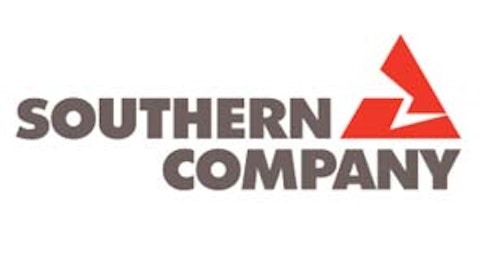As seen below, the company’s mix of resources is expected to become more diversified over the next five years, reducing its dependency on coal. A diverse generation fleet reduces the company’s risk of being overly dependent on any one source of energy.

Source: Southern Company Investor Presentation
Southern Company’s Key Risks
Utility companies generally have lower business risk than many other types of businesses. Their biggest risks are usually regulatory in nature – customer rates are decided at the state level and materially impact the return a utility company gets on its major capital expenditures.
In Southern Company’s case, its main states in the Southeast have historically had generally favorable regulatory rulings. The acquisition of AGL Resources Inc. (NYSE:GAS) will also diversify the company’s regulatory risk.
EPA regulations are another challenge. There is increased scrutiny around coal and nuclear power, which could result in higher spending to remain compliant with safety and emissions standards. If Southern Company cannot pass these costs through to customers, shareholders would take the hit.
Project execution is another big risk facing the company. Southern Company has taken on several major capital projects in recent years. The company is building a coal-fired power plant in Kemper County, Mississippi, and two nuclear plants at Plant Vogtle in Georgia.
The coal gasification project in Mississippi was originally expected to cost $5 billion and go into service in 2014, but it has been delayed by two years and experienced over $1 billion in additional costs. While the Kemper County facility is finally nearing completion, it’s uncertain how the project will be paid for.
A Wall Street Journal article from May 22, 2015, cited that Southern informed state regulators that it might need to raise electricity rates by as much as 41% a month for households to pay for the project. The company was ultimately bailed out by an approved 18% rate increase in August 2015, although the increase was temporary and later revised to 15%.
Southern Co (NYSE:SO) is only about 26% finished with construction of its nuclear plants in Georgia. This project has seen its costs escalate from an estimated $14.1 billion in 2009 to over $20 billion today (Southern’s share of the project’s cost is less than $10 billion). It has also been delayed by more than three years.
While the cost overruns and delays on these massive projects are certainly a black eye for the company and do not help its regulatory relationships in the effected states, we do not believe they impair Southern’s long-term earnings power. However, there is risk that these projects receive unfavorable rate treatment with regulators.
Finally, Southern Company’s acquisition of AGL Resources creates some risk. This was a large deal that comes at a time when the management team is already facing challenges with the company’s large capital projects. AGL gets Southern into a new business (gas utility) and brings exposure to new states that have different regulatory bodies.
Dividend Analysis: Southern Company
We analyze 25+ years of dividend data and 10+ years of fundamental data to understand the safety and growth prospects of a dividend. Southern Company’s long-term dividend and fundamental data charts can all be seen by clicking here.
Dividend Safety Score
Our Safety Score answers the question, “Is the current dividend payment safe?” We look at factors such as current and historical EPS and FCF payout ratios, debt levels, free cash flow generation, industry cyclicality, ROIC trends, and more. Scores of 50 are average, 75 or higher is very good, and 25 or lower is considered weak.
Southern Company’s dividend payment appears very safe with a Dividend Safety Score of 86. If we exclude charges related to increased cost estimates for the company’s large construction projects, Southern’s earnings payout ratio in 2015 was 75%. While we prefer to see a lower payout ratio for most businesses, we can see that Southern Company’s payout ratio has remained between 70% and 80% for most of the last decade.

Source: Simply Safe Dividends
Utility companies can also maintain relatively high payout ratios compared to most businesses because their financial results are so stable. Customers still need to use a certain amount of electricity and gas regardless of economic conditions, making utilities one of the best stock sectors for dividend income.
As seen below, Southern Company’s sales only fell by 8% in fiscal year 2009, and its stock was flat in 2008, outperforming the S&P 500 by 37%. Utility companies are generally great investments to own during economic downturns.

Source: Simply Safe Dividends





